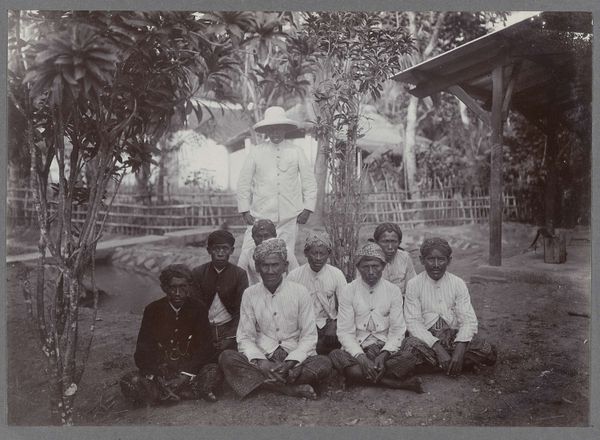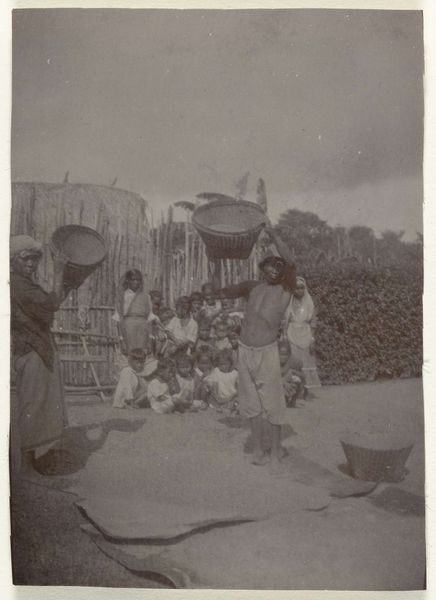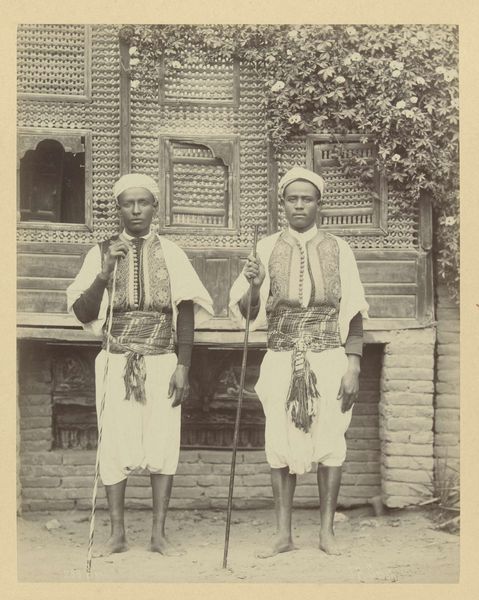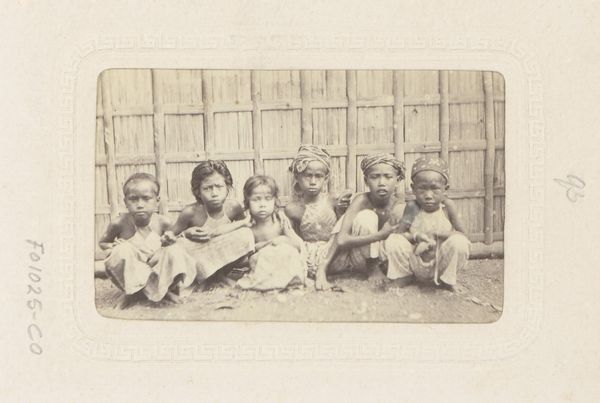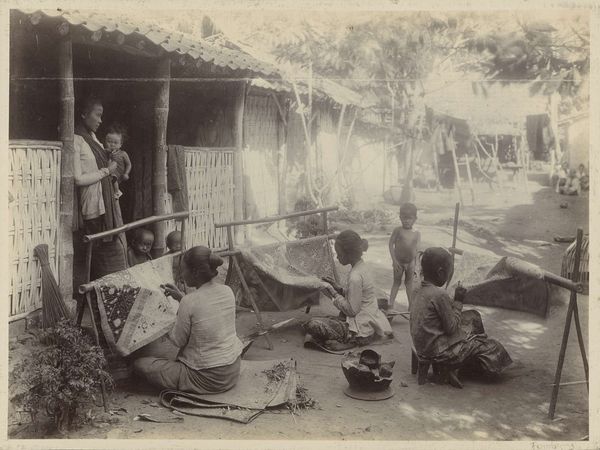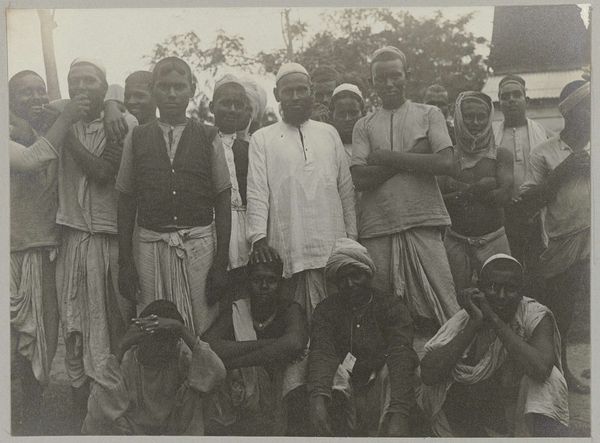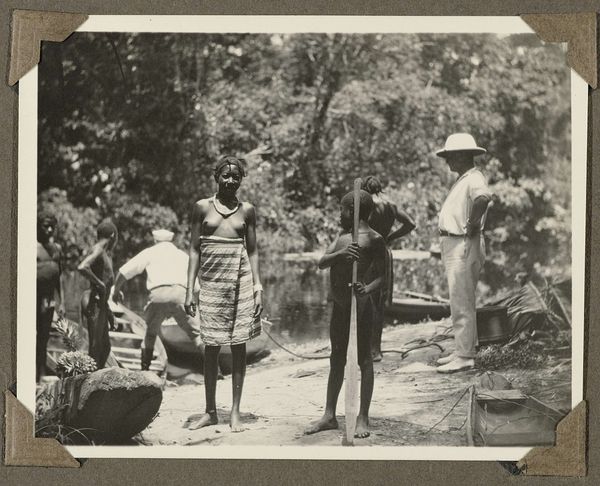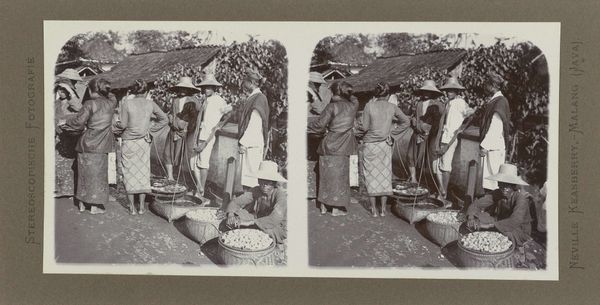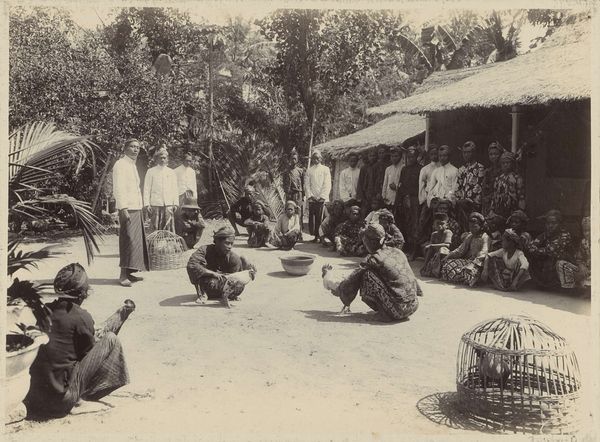
photography
#
portrait
#
asian-art
#
photography
#
old-timey
#
19th century
#
genre-painting
Dimensions: height 97 mm, width 56 mm
Copyright: Rijks Museum: Open Domain
Curator: Before us is a photograph from somewhere between 1860 and 1872 by Woodbury & Page. It's titled "Maleisische bedienden," or "Malay Servants," if translated directly. Editor: It feels posed, doesn’t it? The tight composition creates a rather dense feeling, a somewhat forced intimacy with the subjects. And the light—that muted tonality throughout the sepia… there is a real stillness that invites detailed study. Curator: These qualities certainly stem from the era’s photographic conventions, where longer exposure times necessitated staged settings. But consider the background details—the woven matting, the displayed plates. They hint at a specific socio-economic context in the Dutch East Indies, now Indonesia. This photograph then operates not only as portraiture but as a form of documentation during a specific historical juncture within colonial dynamics. Editor: Precisely! The way they are positioned reinforces a power dynamic. The arrangement of subjects directs our attention and speaks to social standing. Though a static medium, this staging feels dynamic with the implied roles enacted—how were they positioned, and by whom? Also consider that even today these objects communicate social standing for contemporary audiences encountering these photographic materials. Curator: The starkness of the scene is interesting, but that backdrop does lend itself to interpretation. The composition of the woven mat, plates, objects…all strategically arranged and in some ways a reflection of Western modes of visual depiction applied to a colonized context. How the visual language translates is worth considering as well. Editor: Indeed, and it highlights the complex interchange between the West and its colonies, each seeking to define and understand one another. Curator: Thinking about how this imagery might be received now really challenges viewers to reconcile historical visual culture to contemporary views on labor and culture. Editor: These formal choices reveal themselves over time, once a dialogue starts with the historical material, offering much food for thought even well into the twenty-first century.
Comments
No comments
Be the first to comment and join the conversation on the ultimate creative platform.

